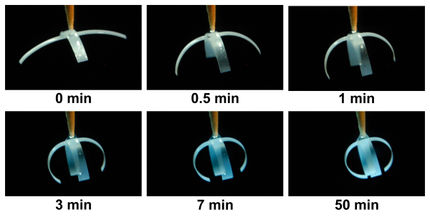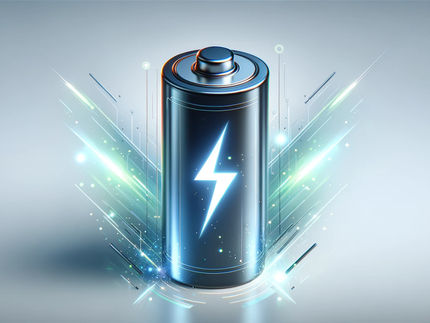From bacteria to electricity: The future of green energy
Advertisement
Showcasing its energy research initiatives for an Earth Day event at the Pentagon, the Office of Naval Research (ONR) will highlight the microbial fuel cell, a device that could revolutionize naval energy use by converting decomposed marine organisms into electricity. These fuel cells convert naturally occurring fuels and oxidants in the marine environment into electricity, offering a clean, efficient and reliable alternative to batteries and other environmentally harmful fuels. The fuel cell can be a viable power source for long-term operation of autonomous underwater unmanned vehicles, in-water sensors, and devices used for surveillance and monitoring the ocean environment.
Named as one of TIME magazine's "Top 50 Inventions for 2009," the fuel cell, with its powerful return of clean energy, could reduce carbon emissions in the environment and change the way we fuel our vehicles and supply power to our homes.
"Microbial fuel cell research is a great example of naval needs propelling advanced technology that also has potential benefit to the public" said Chief of Naval Research, Rear Adm. Nevin Carr. "The Secretary of the Navy issued five energy goals to the Department of the Navy last October at ONR's Naval Energy Forum and this fuel cell research will help provide part of the solution."
"Think of it as a battery that runs on mud," ONR Program Manager Dr. Linda Chrisey said. "They are sustainable, environmentally friendly and don't involve hazardous reactants like a regular battery might because they use the natural carbon in the marine environment. For example, we are working on a 4-foot long autonomous underwater vehicle that will settle on the seafloor and recharge its batteries using this fuel cell approach. We are already able to power many types of sensors using microbial fuel cells."
Dr. Leonard Tender, a research chemist in the Center for Bio/Molecular Science and Engineering at the Naval Research Laboratory (NRL), has been a central figure in the development of the fuel cell. "We work on the intersection of microbiology and electrochemistry," Tender said. "The most fascinating aspect of the program is how these micro-organisms function and the mechanisms by which they take fuel, metabolize it and generate electrical current."
Working with scientists from the University of Massachusetts at Amherst, Tender and his team started to investigate electricity-generating microorganisms. The most promising, called Geobacter , was discovered in the Potomac River immediately downstream of NRL.
The discovery of the tiny Geobacter microbe by Dr. Derek Lovley of the University of Massachusetts at Amherst holds the key to understanding microbial energy conversion. Geobacter uses its hair-like extensions, or pili, to generate electricity from mud and wastewater. Researchers have developed a strain of Geobacter that is eight times more efficient than other strains at producing power.
"Essentially, they could go on for years without any kind of battery replacement," Chrisey said. For this reason, Navy researchers at the Space and Naval Warfare Systems Center (SPAWAR) Pacific are using fuel cell-powered devices to track Pacific-endangered green sea turtles.
"The device is light, efficient and environmentally friendly," said Bart Chadwick, SPAWAR's Head of Environmental Sciences Branch. "The technology is helping track sea turtle populations, if they are feeding near Navy shorefront facilities, which informs Navy decision-making on port operations or construction."
Other news from the department science
Most read news
More news from our other portals
See the theme worlds for related content
Topic World Battery Technology
The topic world Battery Technology combines relevant knowledge in a unique way. Here you will find everything about suppliers and their products, webinars, white papers, catalogs and brochures.

Topic World Battery Technology
The topic world Battery Technology combines relevant knowledge in a unique way. Here you will find everything about suppliers and their products, webinars, white papers, catalogs and brochures.





























































